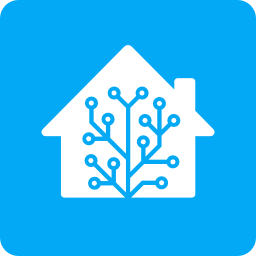

Nice paywall link - very interesting


Nice paywall link - very interesting


Like fingerprinting. Or at least makes it a bit harder to figure out who what and where you are.


Those are 170% maybe the seeds or not. Probably either or
That depends on what your error is. It’s not a magic process, it just tries to help you with formatting. The validate is the magic, it helps you spot errors as you make them.


Great hardware can ameliorate bad software design to some degree


Great insight! You must know a lot about Linux


If you disabled Bluetooth from the control center it will reactivate like you said. If you turn off Bluetooth it stays off
Openbsd IS based. It might not be for the average joe, and it’s never cutting edge. FreeBSD is though. And Netbsd can run on just about anything
While I like the form factor I’m unsure about the built in Ethernet and it’s suitability under openbsd.
I’d try out opnsense and if that fails to work I’d have a look at openwrt. Opnsense just feels a bit more polished but both are more than capable for what you talk about.
If you plan on setting it up as a router-on-a-stick remember you need vlan support on the switch it’s connected to.
A quick Google will give you a link explaining this with a walkthrough of the steps
Some kind of YouTube shenanigans? If they are trying to find the sweet spot of how slow a video can load before I’d rather see an ad and then the video they are winning


On a server you’re usually better off boxing stuff up in containers than using an app-in-a-zip like flatpack. Or maybe I’m just old fashioned…
If the sysadmin knows what he/she/it is doing they know different apps sometimes have conflicting library dependencies.


We remove snap as a first thing on new server installs, and other than the few dormant folders left behind we have 0 issues. Once that stops working we’ll move to Debian I wanna switch now but need something like this to get the rest of the team onboard.


Nah - it’s pretty shit already. I wasn’t on Reddit at the absolute beginning but I did clock in 12+ years. This is more like the end of Reddit - only split into several servers.


Achully the bug-taste in these people isn’t that strong. Some cumin and parsley will make them taste just like any other human. Veggies in the other hand are yum, and don’t need no extra seasoning


The “normal” use-case would be that some IPTV providers will have iptv and “internet” on separate vlans


I have a dream machine myself and I’m so sorry I got it. It can do quite a bit, but I can’t have more than one vlan upstream - and it can’t handle igmp forwarding…. It’s shiny though with a nice gui and apps


Vlans are virtual lans. So no extra equipment, but your router (as minimum) must support them. If your AP also supports them, you send two vlan through one cable (trunking), and attach each vlan to its own SSID on the AP. There will be no connection between devices on SSID1/Vlan1 and devices on SSID2/vlan2. It’s like you have two cables. To make a connection between those devices you must tell your router to forward the packets between the virtual lans.
That’s the whole trick - you see one cable, but inside it’s like 4000 cables. It’s the same inside your switch/router with vlan support - you see one physical port, but it’s 4000 inside - one for each of the 4000 cables. Each one works and behaves like a physical one. You get data in from one, and can forward it upstream to internet or into one of the other nic’s/cables as that’s what a router does


They are not hard once you grasp the idea. They are like separate networks on layer 2(link) - layer 1 (physical) can be shared.
So you get several separate networks for the price (and equipment) of one. If you want to reach a device on one vlan from another it needs to be forwarded by something.
It gets a bit complicated here - as your idea of the network is on layer 4 where tcp and udp and other protocols live. As you don’t want to connect one vlan to the other - you want something that has access to both vlans to forward your layer 3 data (IP) between the links. This is your router. It will have a virtual network card on each vlan. You can tell your router to send data from one network card to the other to forward the data.
I suck at explaining- so you probably better off doing an Udemy network primer or read up a little bit. Good things to understand are the first 4 layers of osi model and routing.
It’s not hard and you can learn how to use it by poking stuff and googling a bit. Just imagine each vlan as a “copy” of your equipment (layer 1) cables and all. Your switch will have to support it, and if you want to trunk (run several vlans though one link) you need support on the other end as well.
/endwalloftext
There are loads of laptops with mobile data. For calling its the phone company stopping it